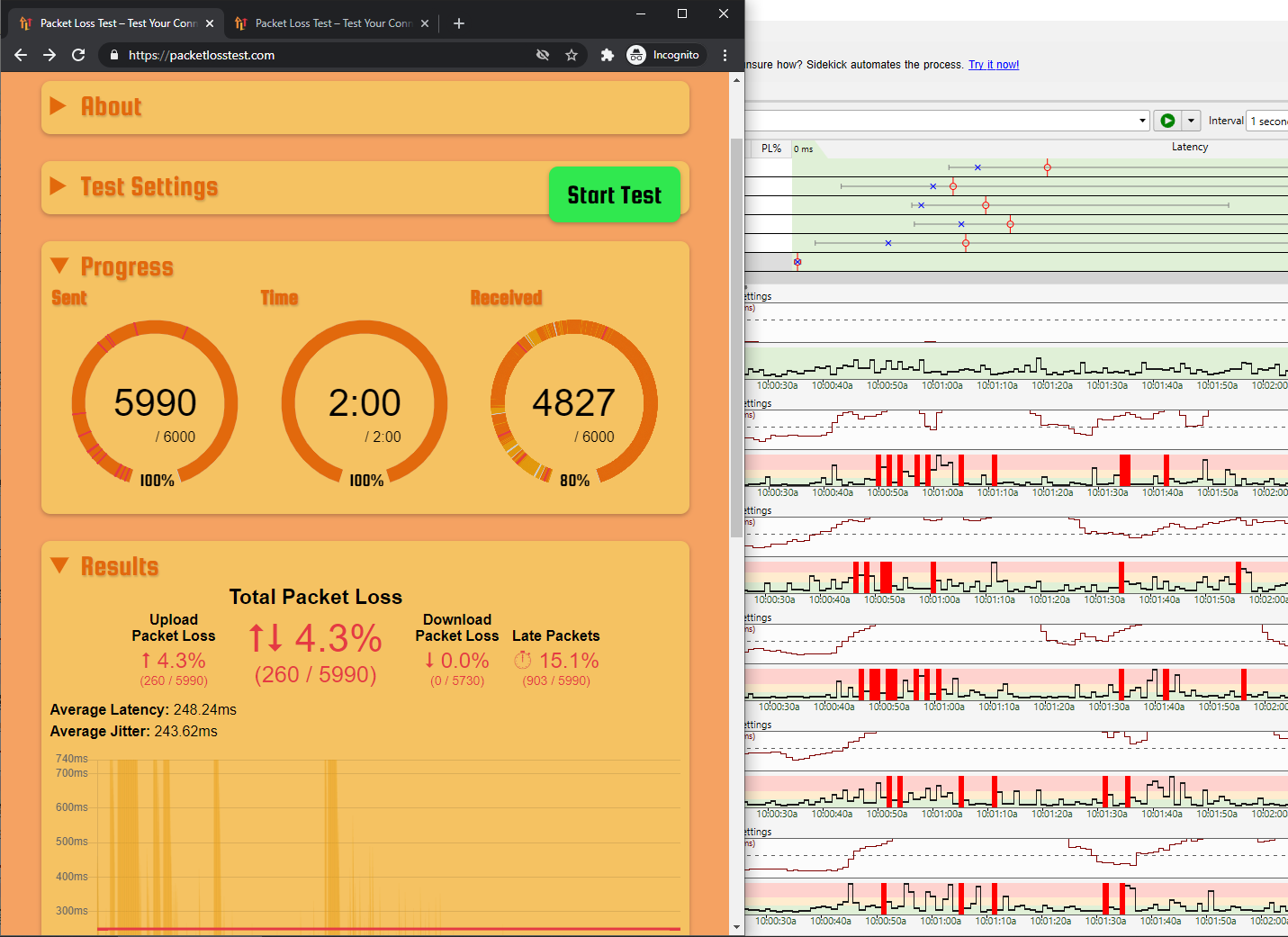

- #Pingplotter troubleshooting packet loss problems how to
- #Pingplotter troubleshooting packet loss problems software
- #Pingplotter troubleshooting packet loss problems download
- #Pingplotter troubleshooting packet loss problems free
From there, the tool will collect latency and packet loss data until you. On the option called "Starting Hop", select " Final Hop Only" Sometimes solving a network problem takes more than rebooting the router. The way to go around that problem is to ping only the last hop. Also, if the number of hops is too high, there is a chance your requests will timeout before there is time to handle them, which will generate false values for the final hop.
#Pingplotter troubleshooting packet loss problems software
This is why when you ping something with a software like PingPlotter, you will almost always get massive packet loss (or total) on intermediary hops. PingPlotter Cloud does offer a variety of very useful tools, that are easy to use and work well to quickly pull information on an end-user device. Another is to "rate limit" them to a maximum of n / minute. Gathering Ping / Trace Data for Troubleshooting This is heavily borrowed from PingPlotter's own troubleshooting guide at Troubleshooting with PingPlotter. Troubleshooting network connections, especially on end-user systems, is one of the most challenging aspects of solving connection issues. Pinging google, the first 4 hop (which seem consistent through a variety of IPs) are: - Router IP - 4ms (I use moca) - 10.72.x.x - 17ms. I'm having some trouble understanding the hops. One way to do that is to block ping requests all together. I've been investigating some packet loss and latency issues that seem to occur every weeknight, and decided to try out pingplotter. Large ISP servers and switches handle a LOT of traffic, and part of that management involves reducing this traffic as much as possible to make it easier on the hardware. A provider is telling you that they can’t see any problems (when you’re clearly having issues) - and you need to show them where the problem really is.What the hell are those 100% packet loss occurrences ?Īnd is there anything I can do about this ?.You’re a systems administrator - and you need to know when connectivity to one of your servers goes down (and want some evidence of where/when/why it went down).You rely on a network or internet service, which happens to be having problems - such as slow performance, random disconnects, or other similar issues.PingPlotter can help with a variety of different network related woes - and can be a great help to you if: Today, it’s a very powerful network monitoring, troubleshooting, and diagnostic tool, which is used by a variety of users - from the “weekend troubleshooter” to full-time network administrators. A common cause of non-continuing packet loss is a router with low priority for timed out ICMP requests (ICMP requests where the TTL equals 0 after reaching them). Over the years, the program has grown, and added a variety of features and capabilities.

PingPlotter was originally created in 1998 to troubleshoot unacceptable lag in an online game (a problem which that particular ISP was claiming no responsibility for at the time). No matter your current network situation, PingPlotter can help you get to the bottom of these kinds of problems faster, so you can find a solution and get back to not having to think about your connection. Or maybe you’re just preparing yourself ahead of time (go you!). If you’re reading this, odds are you’ve encountered (or are currently encountering) this exact situation. The only thing that’s worse than your network connection not working? Trying to figure out why it’s not working. I'm attempting to use PingPlotter to find the problem but I'm fairly new with it - The Packet Loss is occurring on IP 192.168.1.1 while testing 8.8.8.8,, , The other thing I noticed is my Status page for my Modem shows corrected and uncorrectables on EVERY channel. Trace to a Server in the appropriate Server Farm Enter a server name in the Target Entry field for the server farm that you wish to test the connection. This is important in that you know if it's a border.

If, however, you're seeing hop 3, but not hop 4, then it's hop 3 or later. With a desktop and mobile version at your disposal, you can pinpoint network problems anywhere, anytime. If you're seeing something at hop 1, but not hop 2, then your problem is likely hop 1 or later. Our best in class graphical traceroute and ping tools go wherever your network needs you.
#Pingplotter troubleshooting packet loss problems free
It is free to use when just running plots so you do not need to pay for a license. Now, you can make some guesses about where the problem on the return path exists by seeing if any routers are responding.
#Pingplotter troubleshooting packet loss problems download
At that point, it’s *all* you can think about. Go to and download PingPlotter for Windows. PingPlotter can be just as effective locating the outages, packet loss, or latency on ISP equipment, though its can sometimes just be harder to fix those. When it isn’t working right (or stops working all-together)… well, that’s a completely different story.
#Pingplotter troubleshooting packet loss problems how to
The Complete Manual - Learn How to PingPlotterĪ network connection probably isn’t something you think about on a regular basis.


 0 kommentar(er)
0 kommentar(er)
